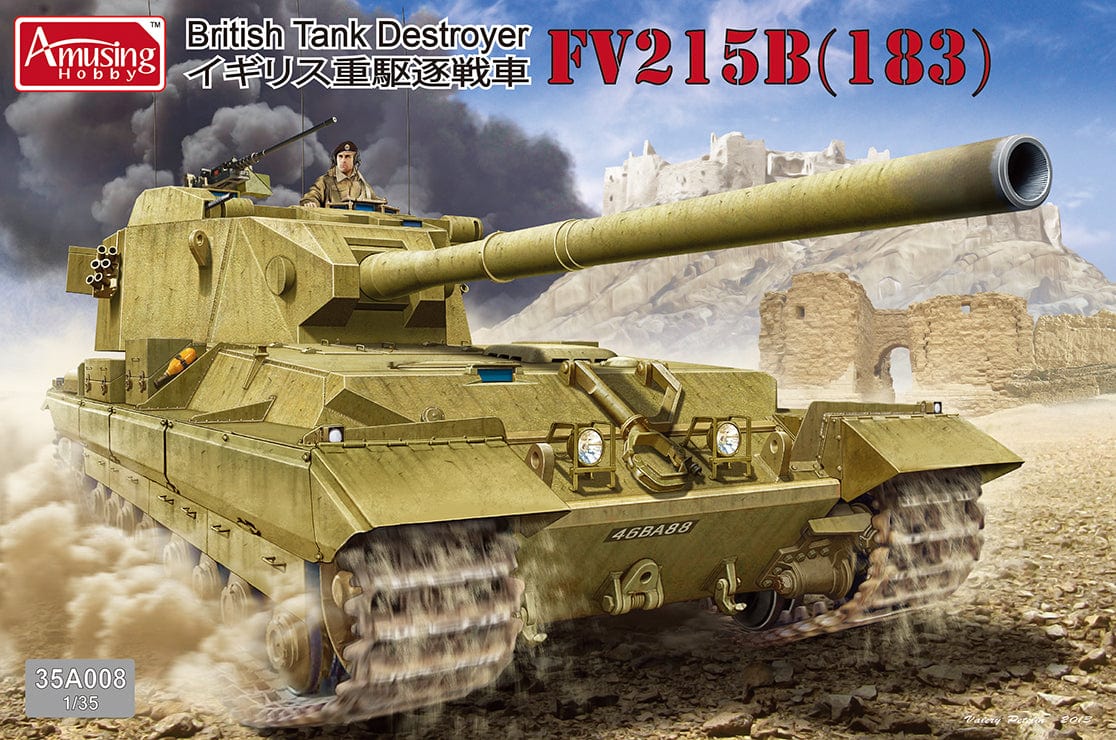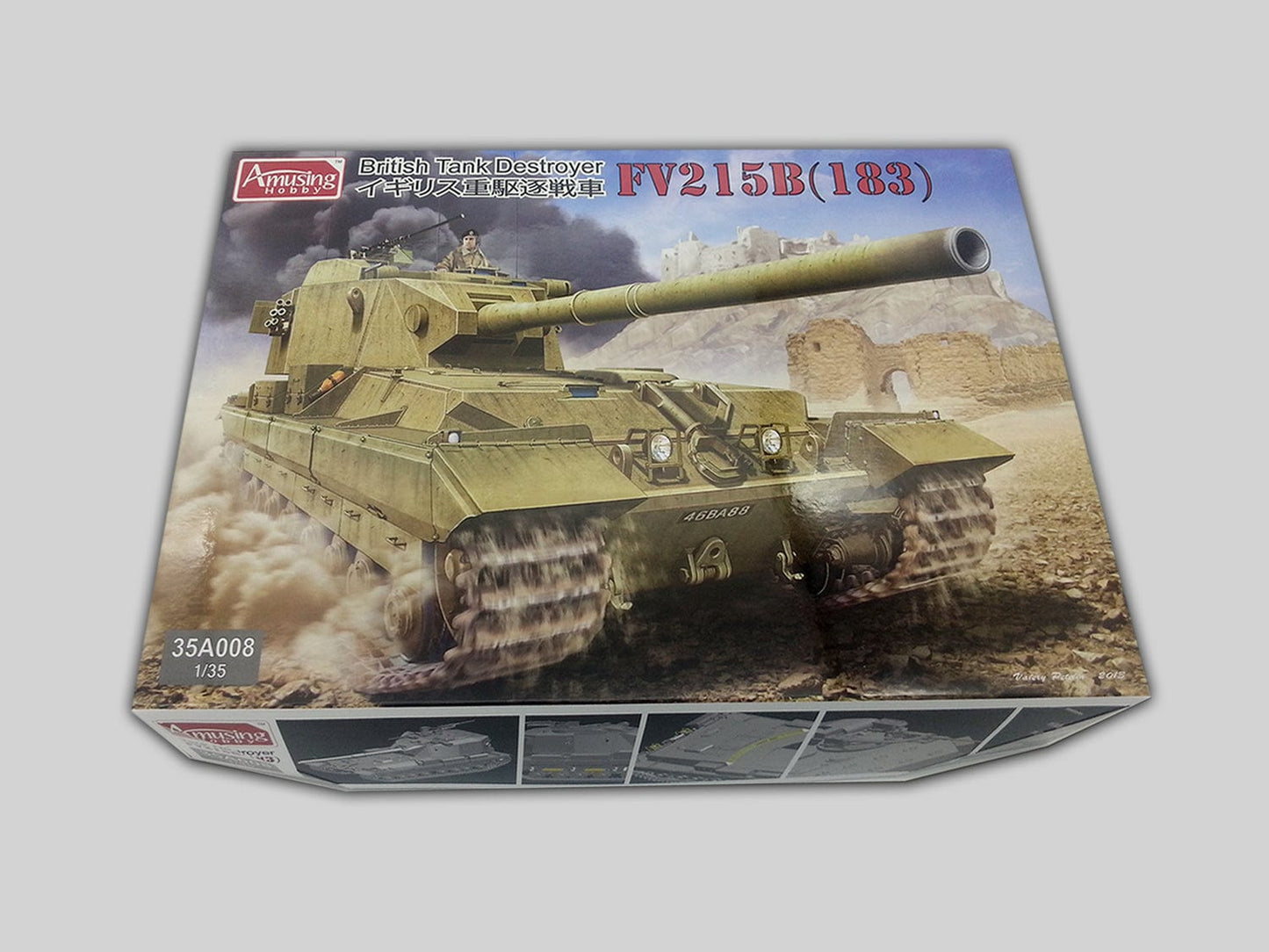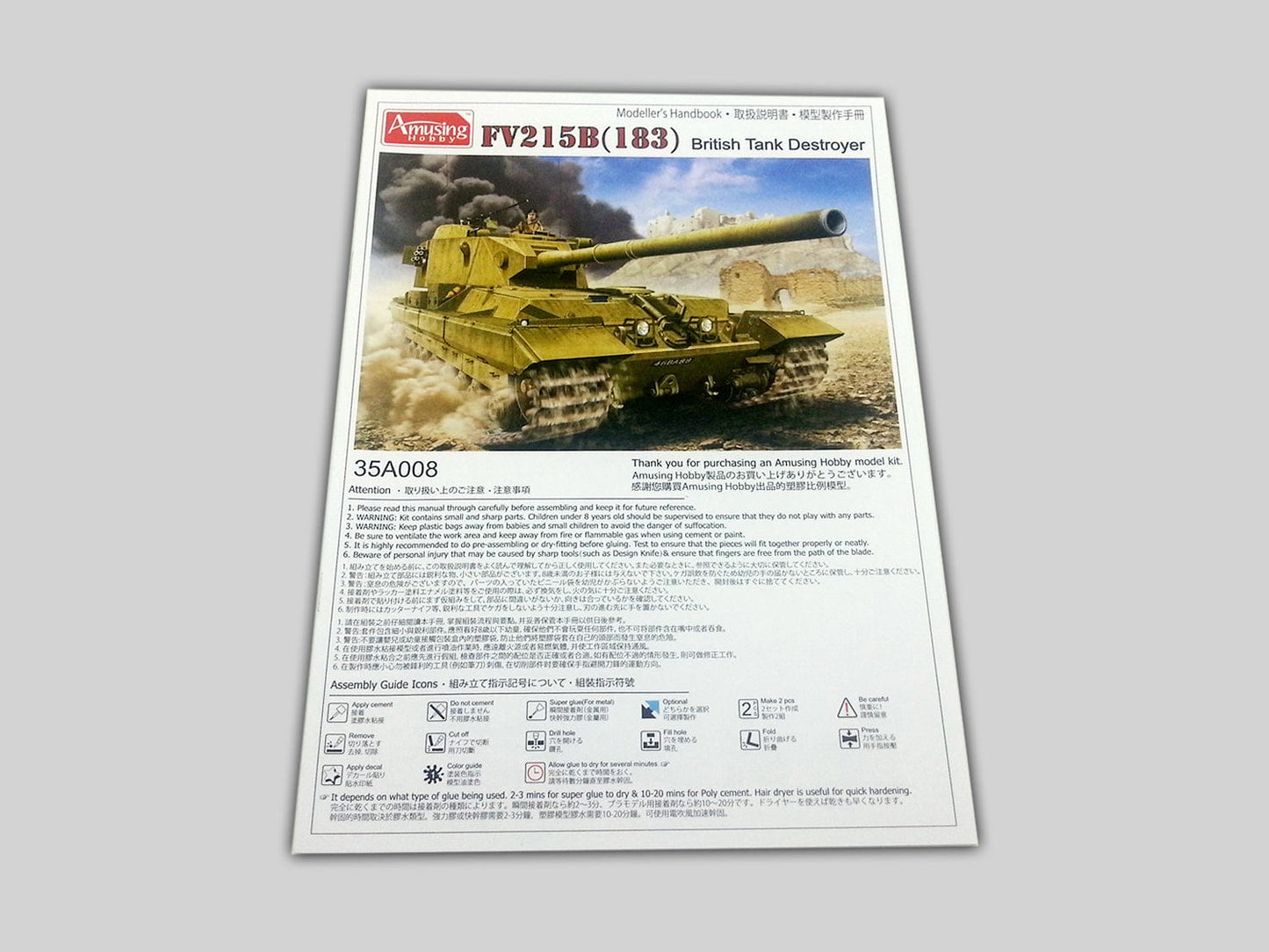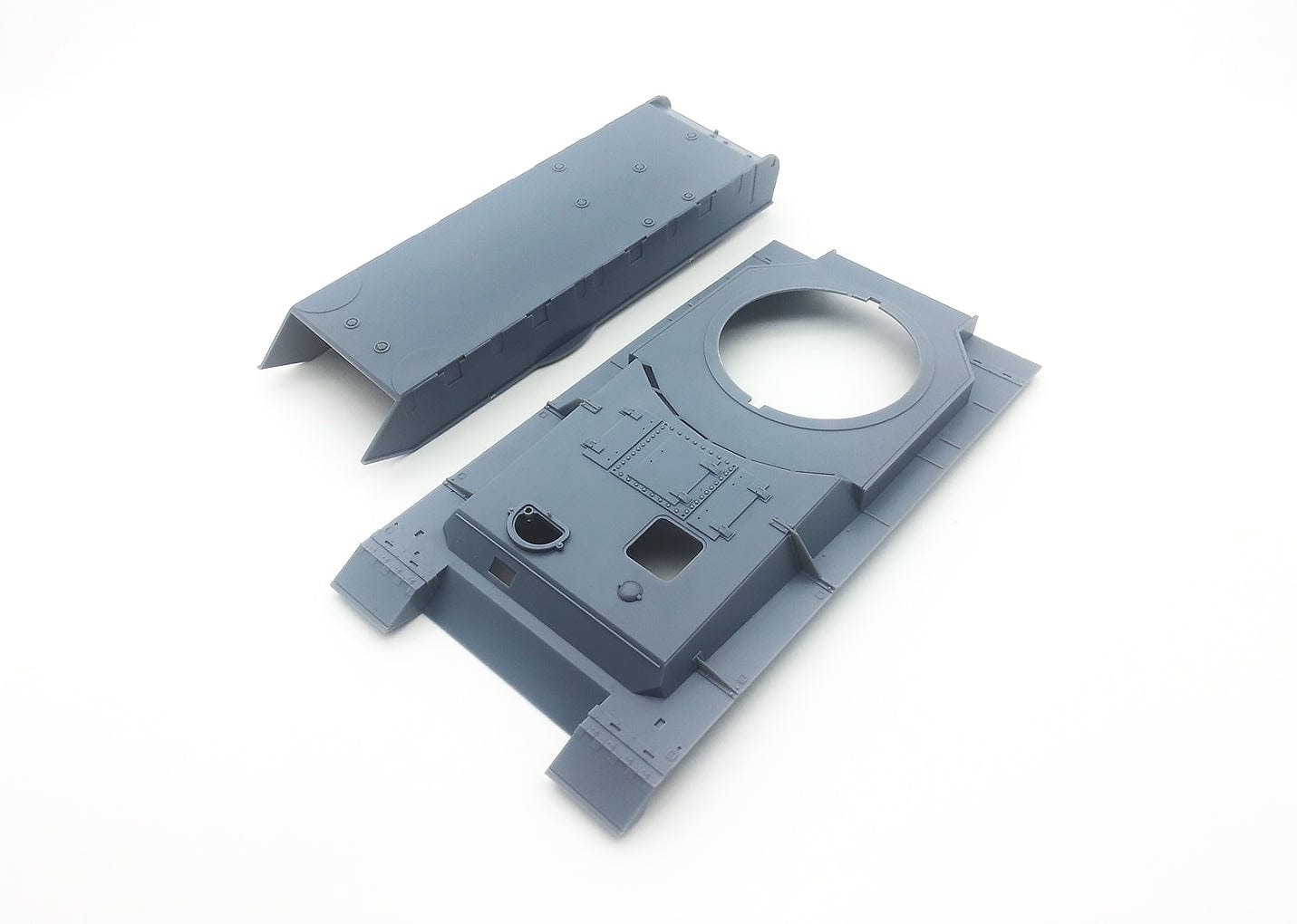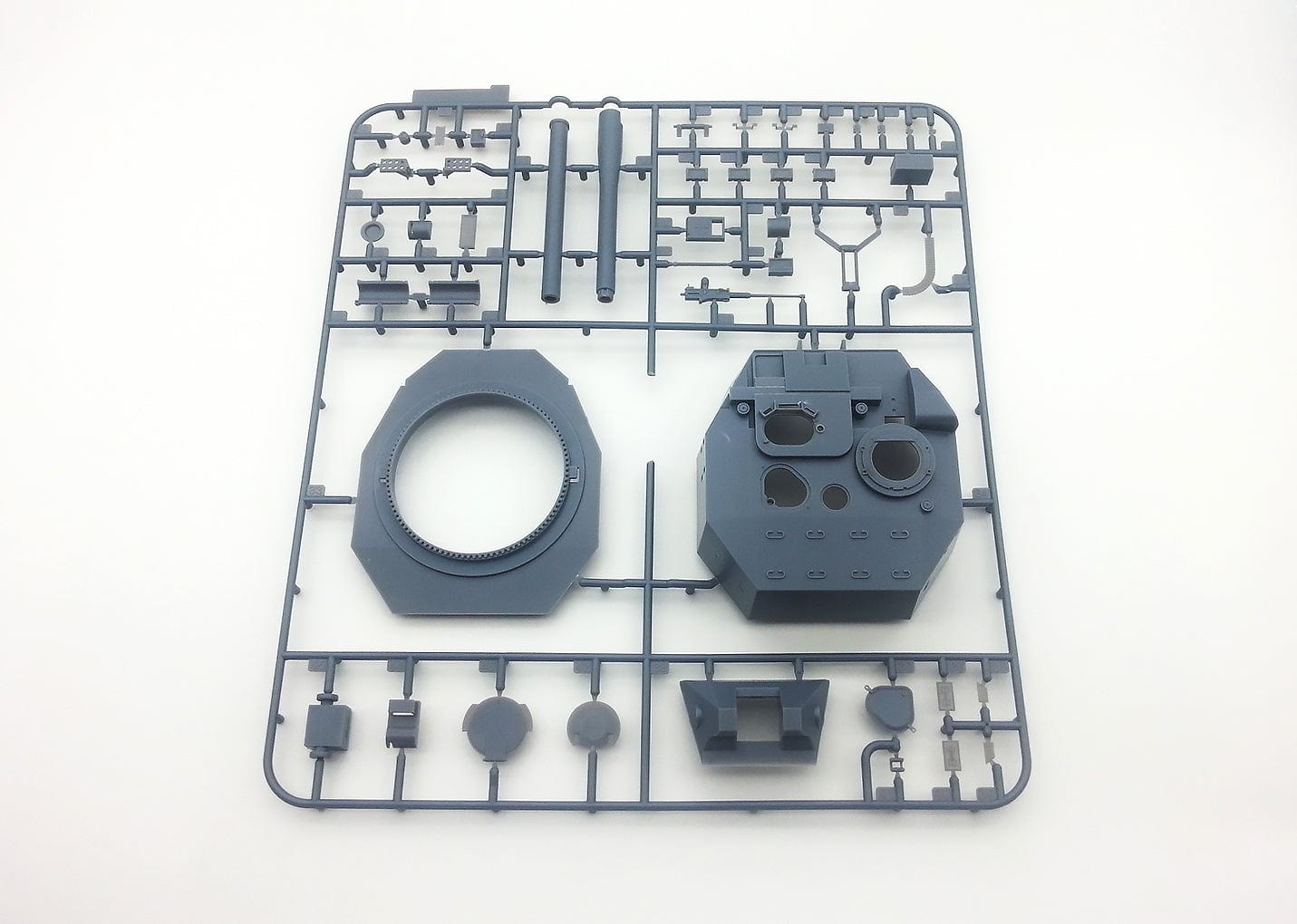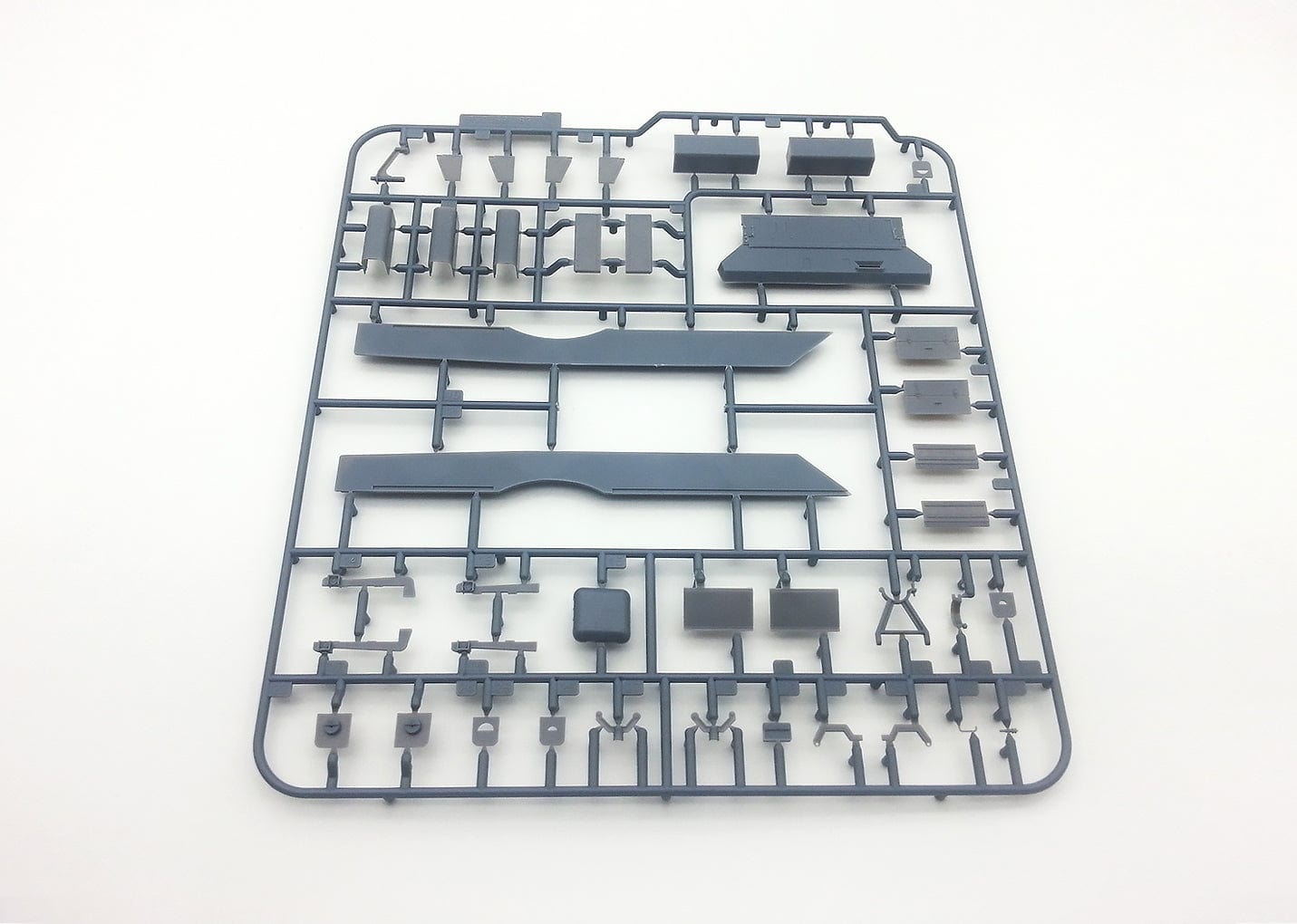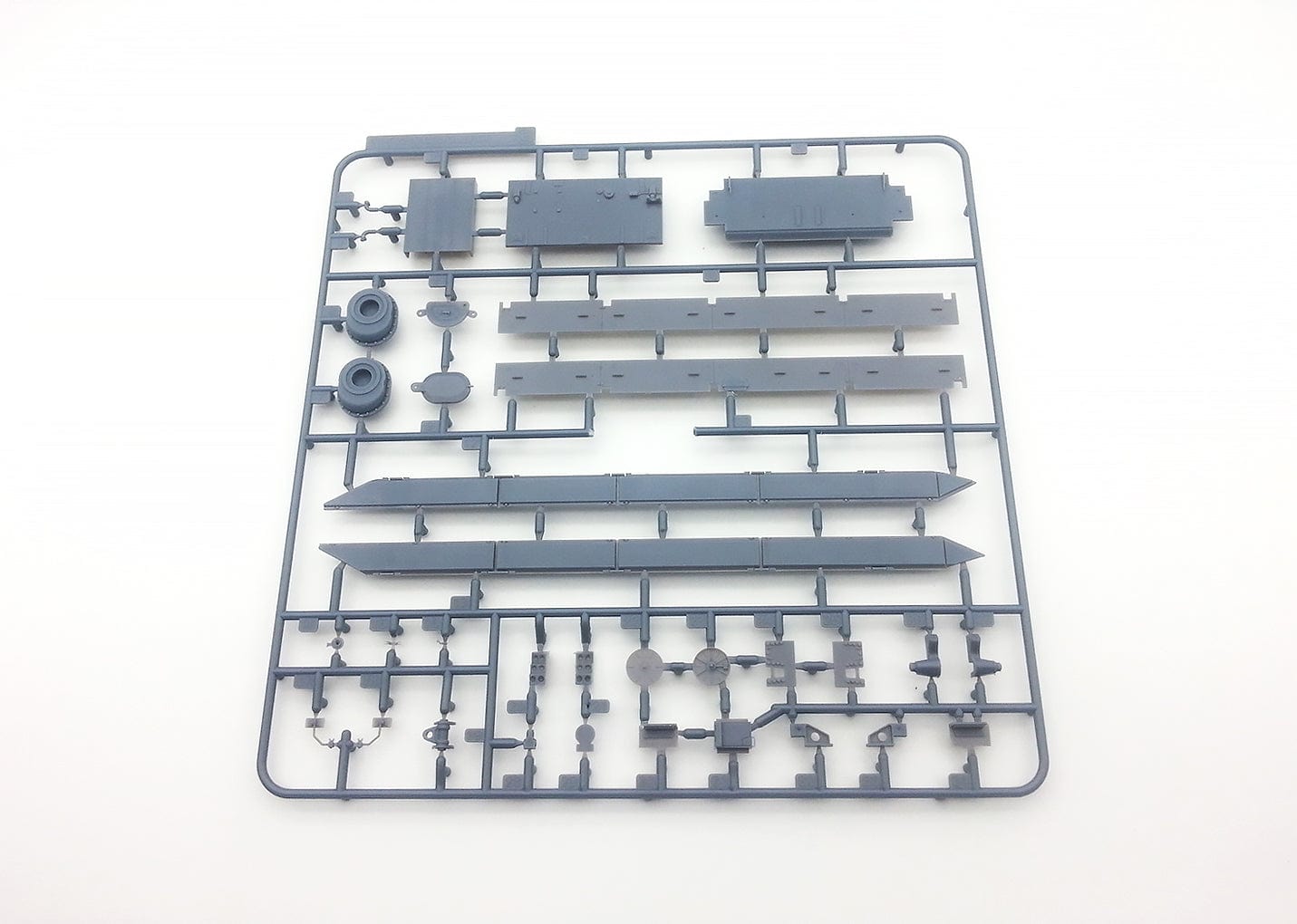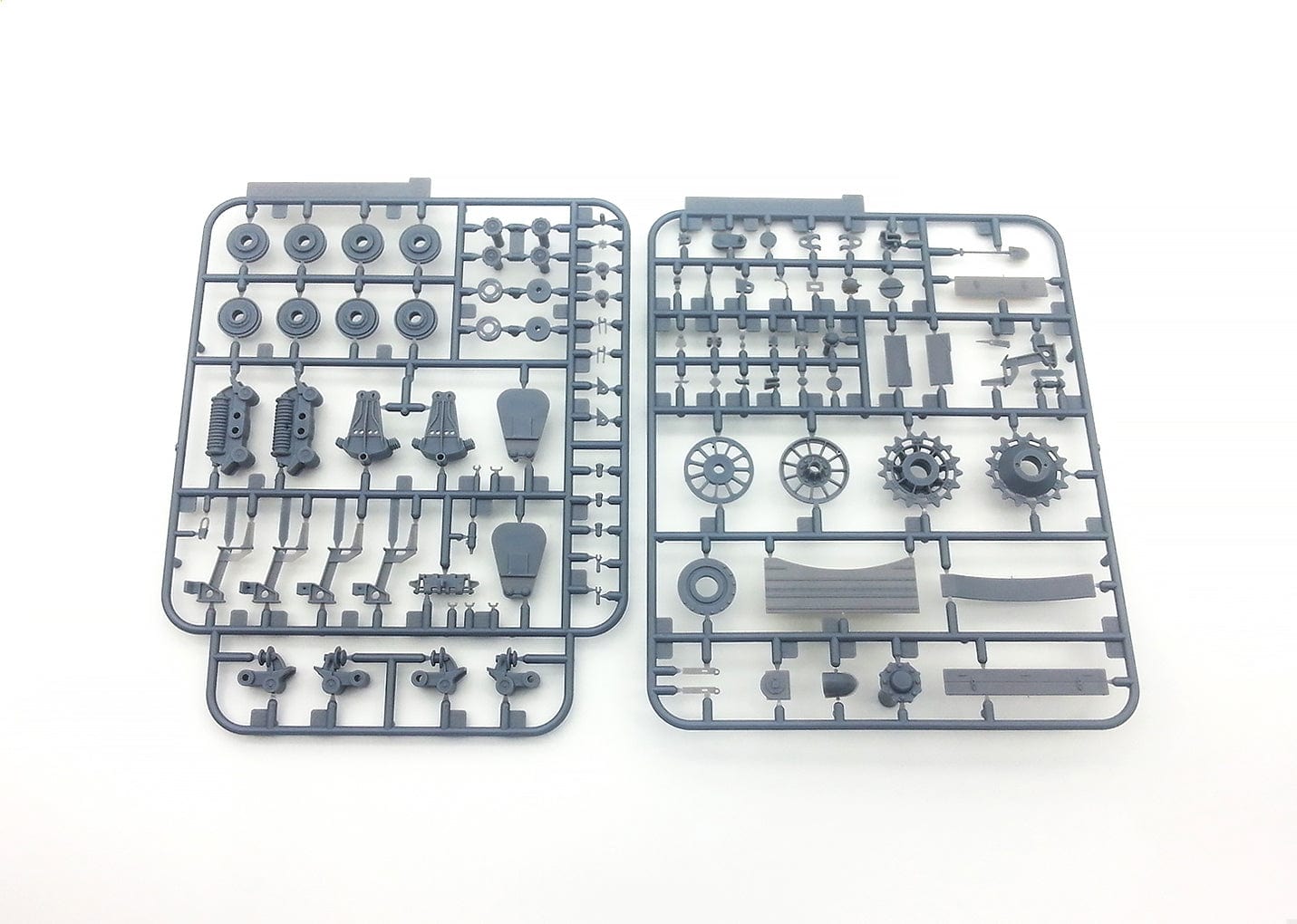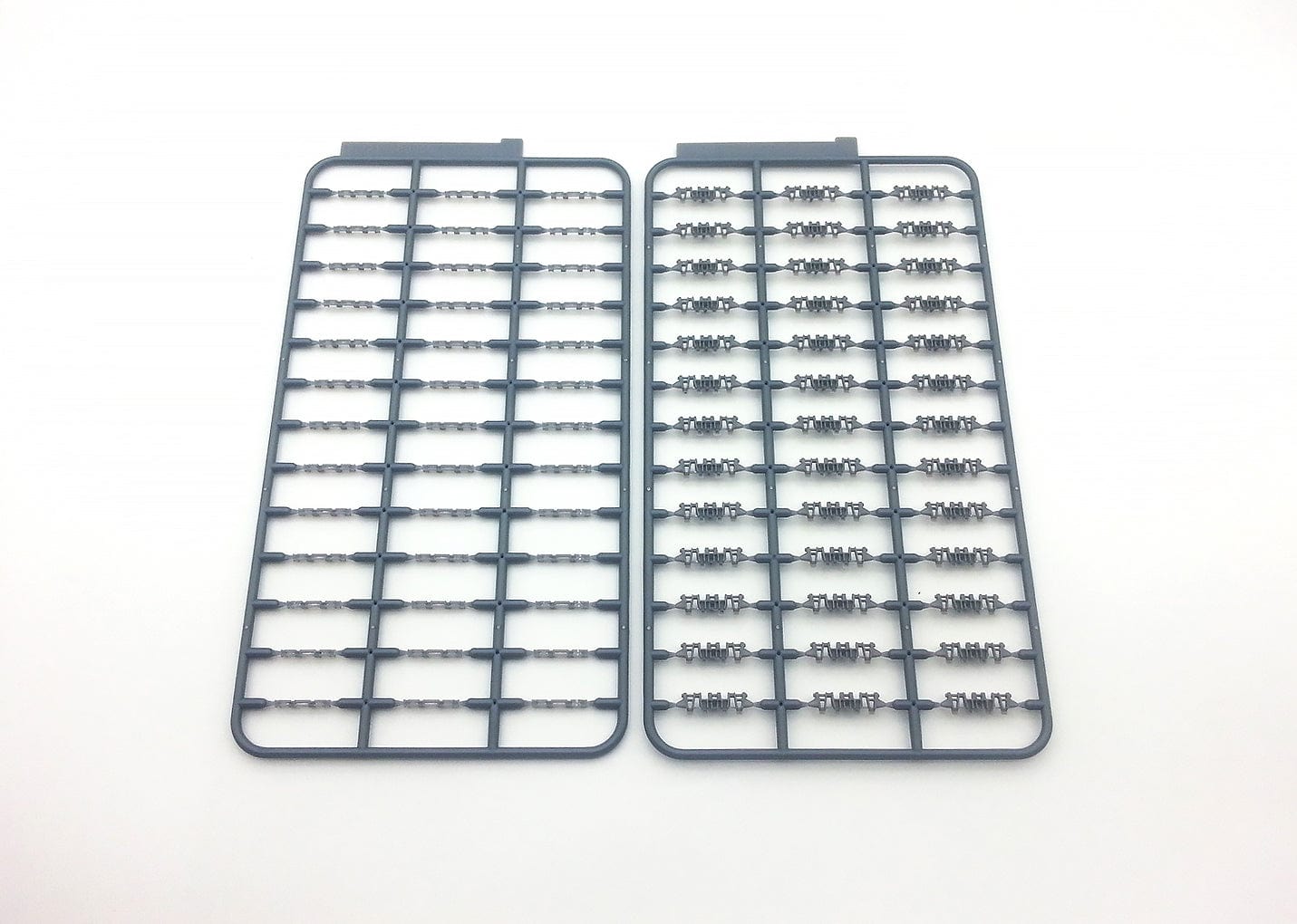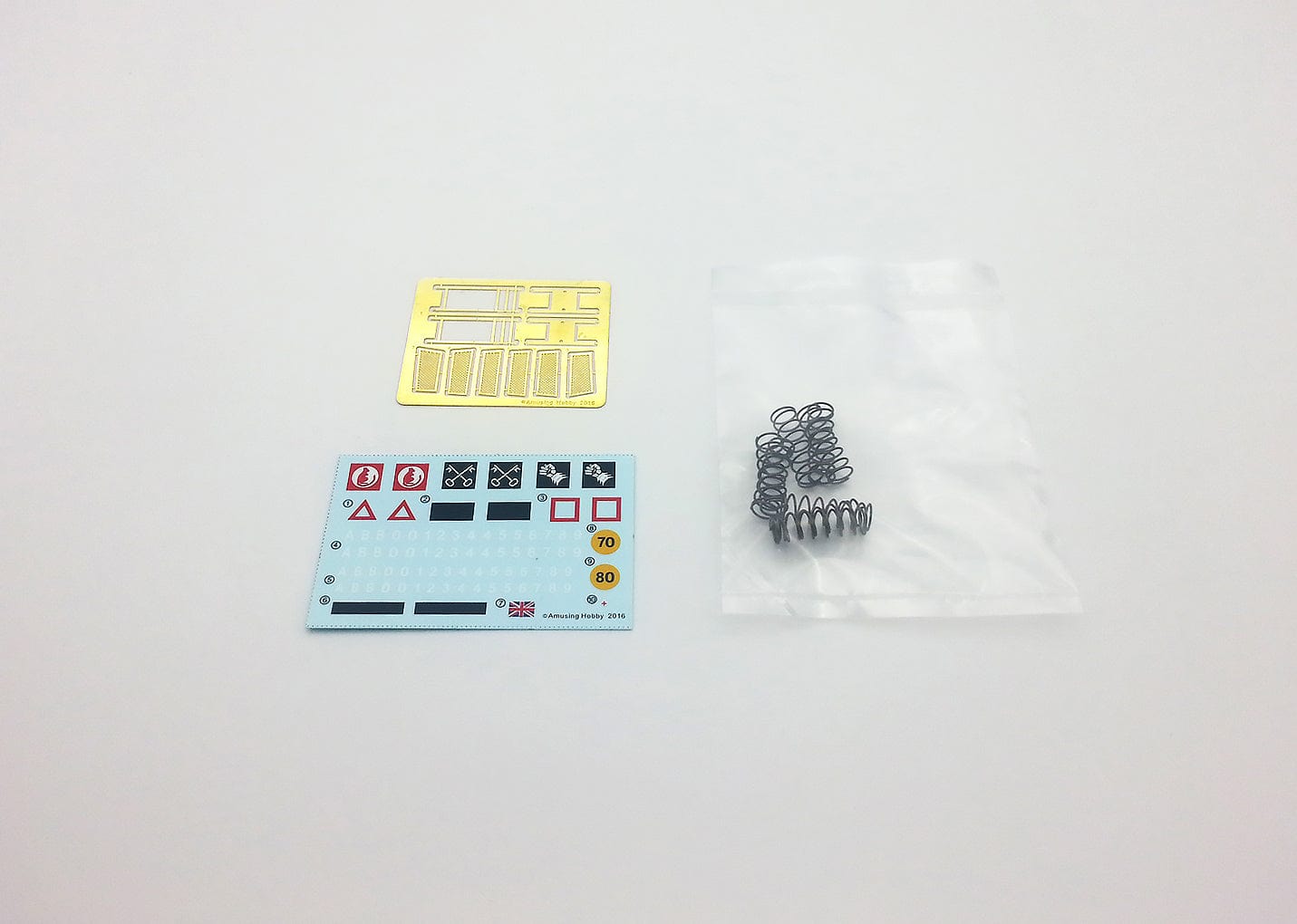This boxed set contains:
- 1 x FV215 183mm 1/35 scale tank destroyer
British Army
As the ‘Heavy No. 2’ part of its designation implies, the FV215 was intended to be a follow up to the FV214 Conqueror – ‘Heavy No. 1’. The vehicle was also known as the ‘FV215, Heavy Anti-Tank Gun, SP’ (SP: Self Propelled). The project started life in mid-1949, and was aimed at increasing the firepower of the ‘Heavy Gun Tanks’. A requirement was formulated for a tank armed with a gun capable of defeating a 60-degree sloped plate, 6 inches (152 mm) thick, at up to 2,000 yards (1,828 meters), a feat impossible even for the powerful 120 mm L1 gun of the FV214. By 1950, Major General Stuart B. Rawlins, Director General of Artillery (D.G. of A.) had concluded that there was no such gun available with that level of ballistic performance. Initially, the British Military looked at the development of a 155 mm gun that would be standardized with the USA. However, even this lacked the required punch and, as such, 6.5 and 7.2 inch (165 and 183 mm respectively) High-Explosive Squash Head (HESH) shells were looked at.
This boxed set contains:
-
1*FV215 183mm 1/35 scale tank destroyer
As the ‘Heavy No. 2’ part of its designation implies, the FV215 was intended to be a follow up to the FV214 Conqueror – ‘Heavy No. 1’. The vehicle was also known as the ‘FV215, Heavy Anti-Tank Gun, SP’ (SP: Self Propelled). The project started life in mid-1949, and was aimed at increasing the firepower of the ‘Heavy Gun Tanks’. A requirement was formulated for a tank armed with a gun capable of defeating a 60-degree sloped plate, 6 inches (152 mm) thick, at up to 2,000 yards (1,828 meters), a feat impossible even for the powerful 120 mm L1 gun of the FV214. By 1950, Major General Stuart B. Rawlins, Director General of Artillery (D.G. of A.) had concluded that there was no such gun available with that level of ballistic performance. Initially, the British Military looked at the development of a 155 mm gun that would be standardized with the USA. However, even this lacked the required punch and, as such, 6.5 and 7.2 inch (165 and 183 mm respectively) High-Explosive Squash Head (HESH) shells were looked at.
